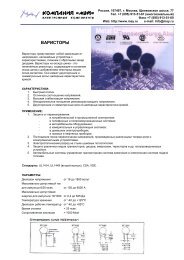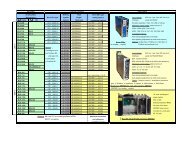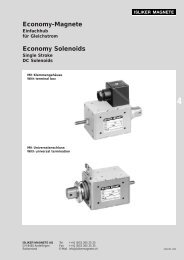Untitled
Untitled
Untitled
- No tags were found...
Create successful ePaper yourself
Turn your PDF publications into a flip-book with our unique Google optimized e-Paper software.
STEP MOTOR basicSingle Step Response and ResonancesThe single-step response character- istics of a stepper motor is shown in figure 11.When one step pulse is applied to a stepper motor the rotor behaves in a manner as defined by theabove curve. The step time t is the time it takes the motor shaft to rotate one step angle oncethe first step pulse is applied. This step time is highly dependent on the ratio of torque to inertia (load)as well as the type of driver used.Since the torque is a function of the displacement it follows that the acceleration will also be.Therefore, when moving in large step increments a high torque is developed and consequently a highacceleration. This can cause over shots and ringing as shown. The settling time T is the time ittakes these oscillations or ringing to cease. In certain applications this phenomena can be undesirable.It is possible to reduce or eliminate this behaviour by microstepping the stepper motor.Stepper motors can often exhibit a phenomena refered to as resonance at certain step rates.This can be seen as a sudden loss or drop in torque at certain speeds which can result in missed stepsor loss of synchronism. It occurs when the input step pulse rate coincides with the natural oscillationfrequency of the rotor. Often there is a resonance area around the 100 – 200 pps region and alsoone in the high step pulse rate region. The resonance phenomena of a stepper motor comes from itsbasic construction and therefore it is not possible to eliminate it completely. It is also dependent uponthe load conditions. It can be reduced by driving the motor in half or microstepping modes.Figure. 7 - Torque vs. rotorangular position.NOTEDELTA PRECISION MOTORS 39







